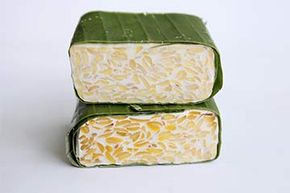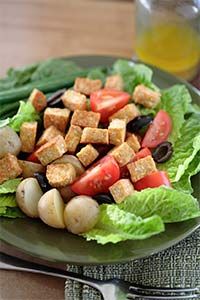They say it's the new tofu. And the latest superfood. What are we talking about? Tempeh! Tempeh (pronounced TEM-pay) is a fermented soybean product that's little-processed, easily digestible, and can be used like almost any meat product. It originated on Java, an island in Indonesia, which makes it the only major traditional soy food that did not come from China or Japan. To make tempeh, cooked and dehulled soybeans are infused with mold spores (Rhizopus oligosporus, to be exact), packed into containers and heated at 86-88 degrees Fahrenheit (30-31 degrees Celsius). After 24 hours, the product has hardened and is ready to ship [source: Shurtleff and Aoyagi].
Typically, tempeh is sold in cake or patty form. Consumers slice, cube or crumble it, then add it to just about any dish: salads, soups, stews and sandwiches. While tempeh's natural flavor is a bit earthy, like a nutty mushroom, it easily absorbs the flavors of the foods with which it's cooked [sources: Knutson, MDHIL Networks]. In the U.S., Asian and natural foods stores regularly carry tempeh, although it's starting to be found in traditional grocery stores as well.
Advertisement
Tempeh was first made at least several centuries ago. But it's a rather new food for Western palates. The first commercial tempeh was produced in the U.S. in 1978 [source: Yonan]. In contrast, tofu, a somewhat similar soy-based food, was first commercially produced in the U.S. in 1895. It took tofu about 80 years before it really broke into Americans' consciousness [source: Shurtleff and Aoyagi]. So it's not too surprising that many Americans aren't familiar with tempeh yet.
But tempeh is slowly gaining attention because of its high nutritional value. Packed with protein, riboflavin (B-2), iron, calcium, potassium and dietary fiber (phew!), plus lacking cholesterol, it's hard to top when it comes to a nutrient-rich food [source: MDHIL Networks]. Of course, the key to getting people to try a new food is knowledge. So let's first look at why we might wish to cook with tempeh instead of another food.




